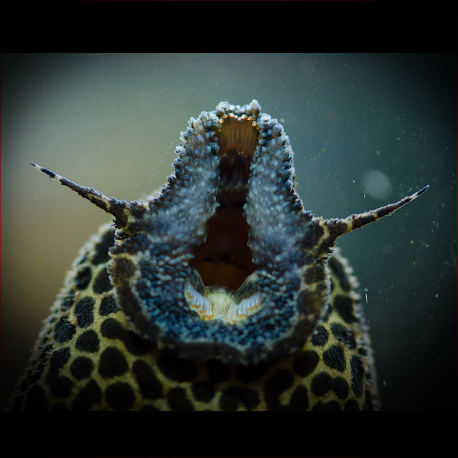More info
Datasheet
| Minimum Tank Size | 650 litres / 171.71 US gallons |
| Maximum Size | 25.0cm / 9.84inches |
| Temperature | 24°C / 75.20°F - 30°C / 86.00°F |
| Hardness | 1.01dgH / 18ppm - 15.02dgH / 268ppm |
| pH | 5.5-7.5 |
General Description
Pseudacanthicus Cf. Leopardus, commonly known as L114, Lda007, or Demini Leopard Cactus Pleco, belongs to the Loricariidae family and is a species under the order Siluriformes. It can reach a maximum size of 25.0 cm and is often traded as the "leopard cactus pleco." The etymology of its scientific name, Pseudacanthicus, is derived from the Greek words for "false" and the generic name Acanthicus.
Aquarium Setup
To successfully maintain Pseudacanthicus Cf. Leopardus in captivity, a tank with a minimum size of 650 litres is recommended. The ideal tank setup should mimic a flowing river environment, featuring variously sized rocks, sand, fine gravel, and water-worn boulders. Additionally, the aquarium can be decorated with driftwood branches, terracotta pipes, and plant pots to create hiding spots and shaded areas for the fish.
Behaviour
This species is not overly challenging to care for when provided with suitable conditions in an aquarium resembling its natural habitat. Pseudacanthicus Cf. Leopardus is known to be a cave spawner, with the male taking on the responsibility of brood care. Furthermore, successful breeding of this species has been achieved in captivity.
Feeding and Diet
In the wild, Pseudacanthicus Cf. Leopardus likely displays an omnivorous diet, showing a preference for aquatic invertebrates. When kept in an aquarium, a varied diet is essential for their well-being. This can include sinking dried foods, frozen Daphnia, mosquito larvae, bloodworm, prawn/shrimp, fresh fruit, parboiled potato, and homemade gelatin-bound foods tailored with fresh vegetables, Spirulina, and meatier ingredients.
Reproduction & Dimorphism
In terms of reproduction, Pseudacanthicus Cf. Leopardus is a cave spawner, with the male fish being responsible for caring for the brood. Successful breeding of this species has been documented in home aquariums. Adult males can be distinguished from females by possessing a broader head and more extensive odontode development, particularly on the leading pectoral-fin rays and interopercular region.
Habitat and Distribution
These plecos are primarily found in the rio Negro basin, Amazonas state, Brazil, especially in the rio Demini, a northern tributary that flows into the central Negro in the municipality of Barcelos. While P. leopardus was originally described from the Rupununi River in Guyana, its identification remains uncertain.
For additional details, refer to the table for specific water conditions required for maintaining Pseudacanthicus Cf. Leopardus in an aquarium.

